
To the Fjords
Kistefos and Flåm
We took a taxi to the rental car office to pick up a rental car. The clerk looked at our luggage with some sympathy and gave us an upgrade to a larger hybrid SUV which proved comfortable for our twelve days driving around. We left Oslo and drove north a little over an hour to visit to the outdoor Museum of Kistefos.
The museum has outdoor works of art, indoor gallery spaces and repurposed industrial buildings along a rushing river. The first installation we visited was the Twist Gallery, which spans the river and featured art by British artist Hurvin Anderson that we quite enjoyed.




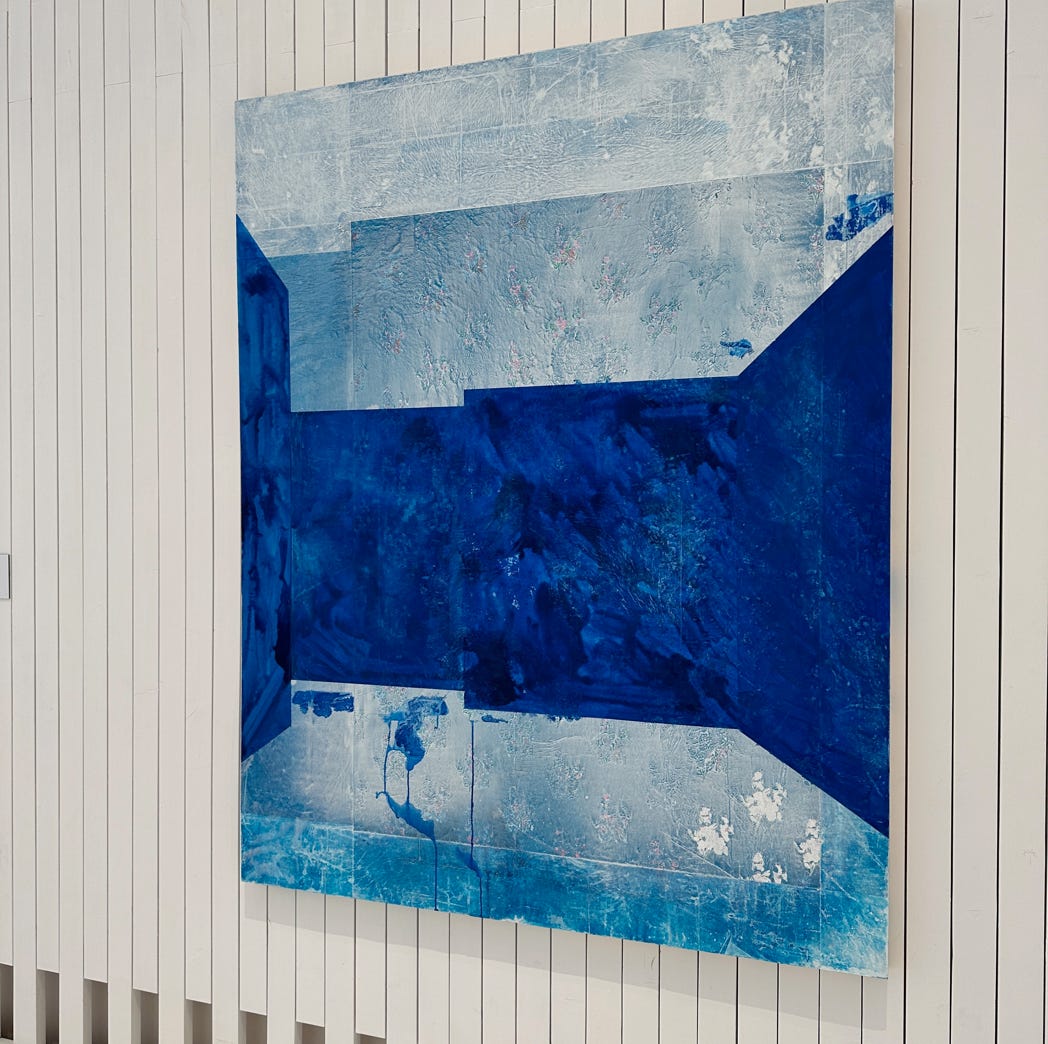


Above are views of the Twist bridge, a painting in the gallery by Anderson and the interior gallery space.
We next walked through the outdoor sculpture garden, and particularly enjoyed the Shine of Life, Energy-Matter-Space-Time and Path of Silence, the latter two of which feature water movement. And of course, the Tumbling Tacks by Claes Oldenburg and Coosje Van Bruggen, one of their last works, was a highlight. We have enjoyed their work at other museums. We had lunch at the Kistefos café and then walked on a bridge across the river, where we saw a huge sculpture in the middle of the roaring river called “All of Nature Flows Through Us” and got another perspective on the Twist. We enjoyed our visit to Kistefos. We have visited several similar open air museums around the world and found this on to be among the best.
Here are some more works from the grounds (Shine of Life, Energy-Matter Space, Tumbling Tacks and All of Nature Flows Through Us).
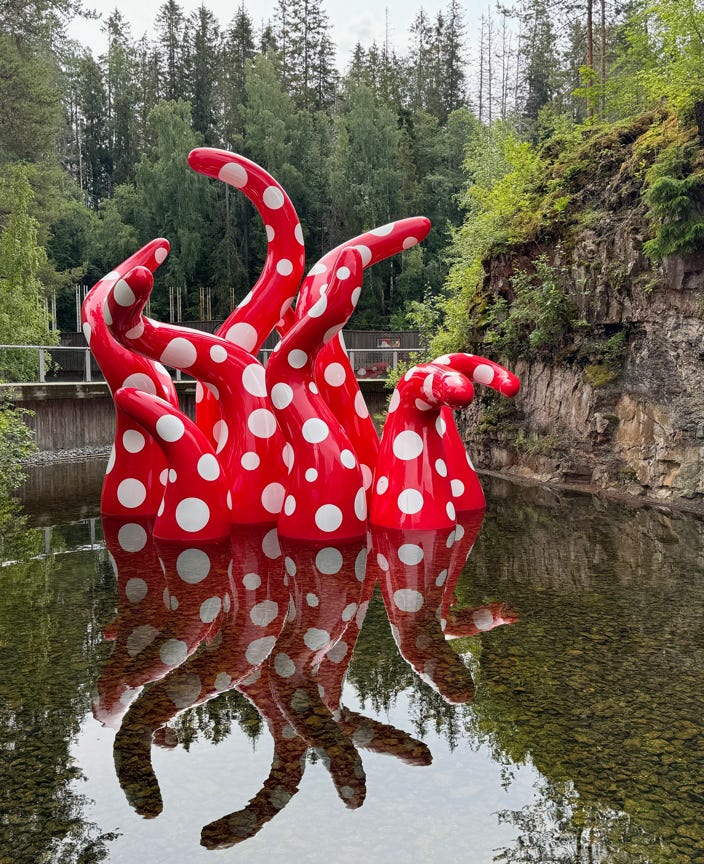


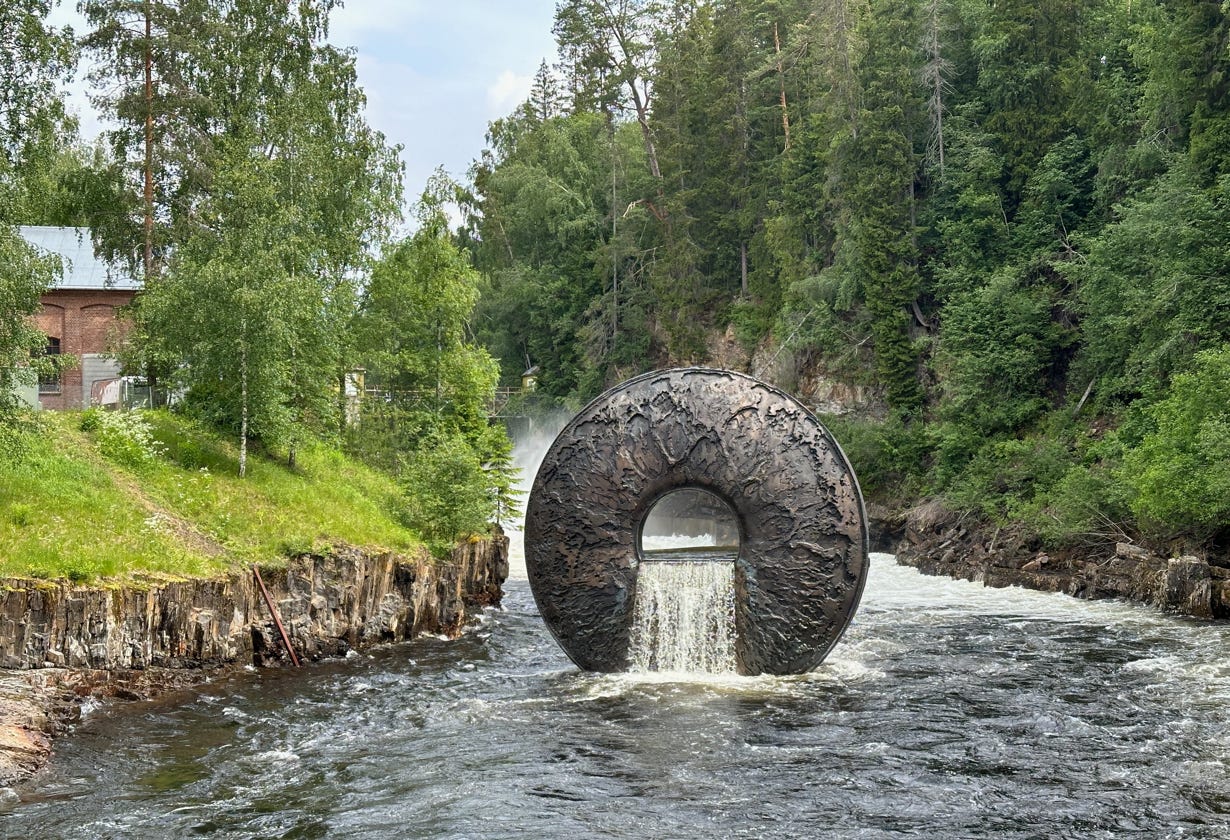

We saw lots of lupine in our drives around this part of Norway. Unlike here, they are not only blue.
From there, we drove farther north, initially on Highway E7. The scenery changed from farmland to dense forest, and we drove alongside rivers and along lake shores. Eventually we turned off on route 50 which climbed to a plateau that had many rushing waterfalls and snow, plus ice still floating on the surface of a nearby lake. The area was called Aurlandsdalen, and we are unsure of the elevation of the mountain pass but think it is over 1,100 or 1,200 meters since it was above the tree line for several miles.
Here is the map of the route we took today.

And here are a few photos. Photography was challenging since there were many electric power lines.



Then we headed to Fjord country and drove through more than ten tunnels as we descended. Several were more than four kilometers in length. Below is our first view of the fjords.

We eventually arrived in Aurland, and because the sun was peeking out from clouds, we decided to see the view from up on the Stegastein Viewpoint, a 20 minute drive from the village of Aurland up a narrow road with many switchbacks. The view platform juts out towards the fjord at a height of 650 meters. We could see the town way below and the main branch of the Sognefjord in the distance. There are many waterfalls and steep rock walls. This was our first taste of the Norwegian Fjords, and whetted our appetite for more.

Views of Aurland and the Aurlandsfjord.
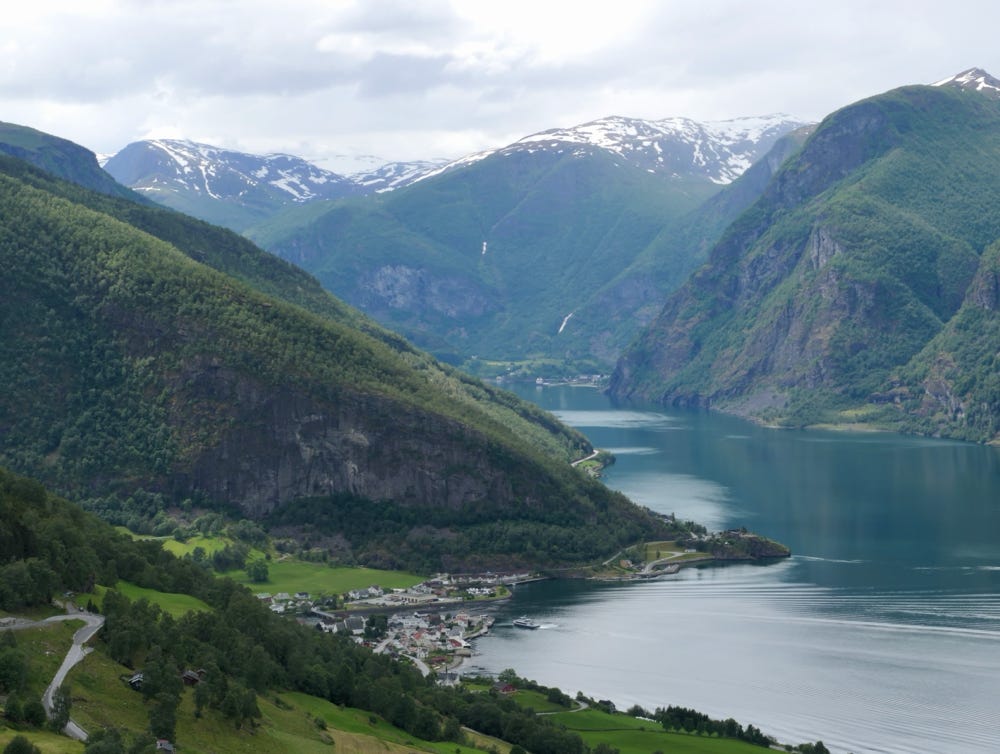
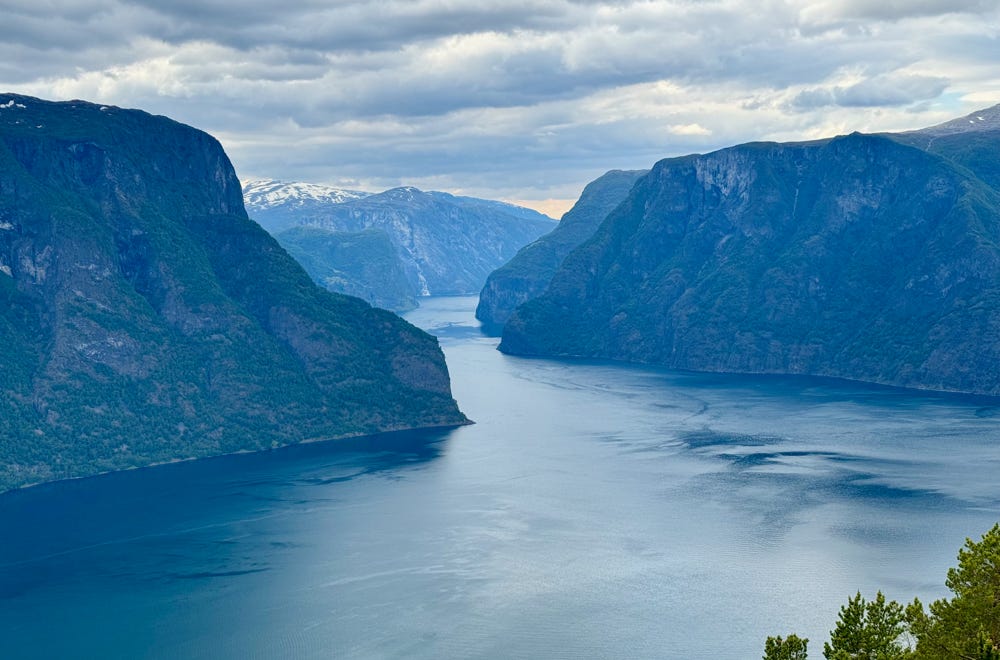
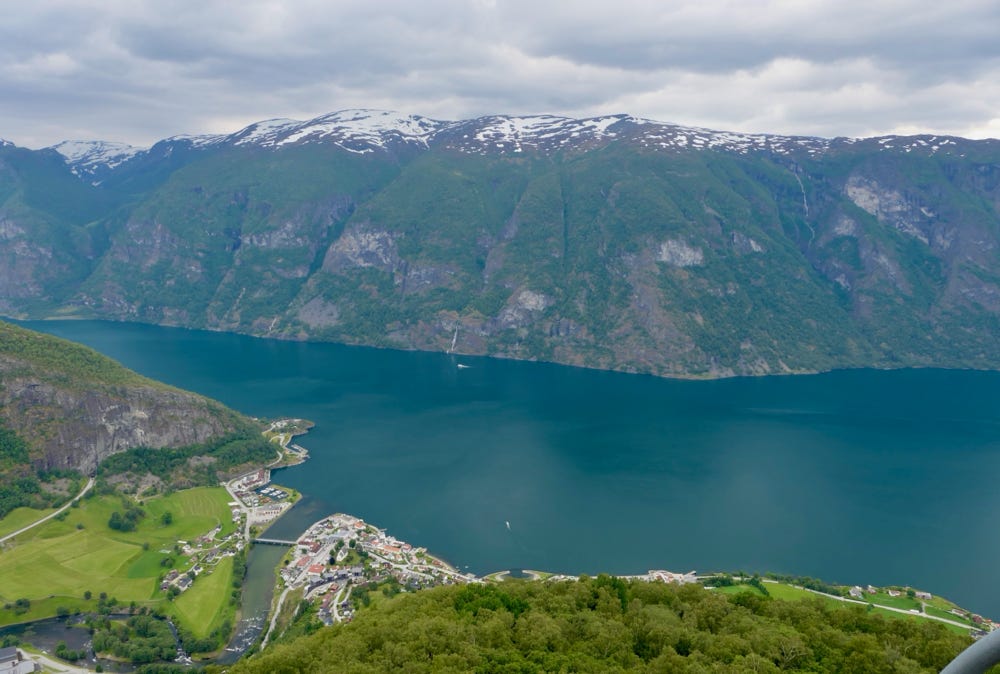
Here is a view of the platform at the Stegasteing viewpoint.

From there, we drove about a half hour to the small port town of Flåm, where we checked into our hotel with close up views of the fjord. Driving into town, the Flåm railway (for which the town is famous) train was pulling into the nearby station. There were no cruise ships in Flåm today, and after the “Norway in a Nutshell” passengers had departed, the town was sleepy. Flåm is a major tourist port and we were worried about encountering crowds, so we were pleased that we found it fairly peaceful. Our hotel room offered a view of the fjord and harbor on one side and a large waterfall on the other.
It was only our first day driving around the fjords but we were already wowed by the magnificent scenery. Tomorrow we will visit one of the fjords on the UNESCO list.
